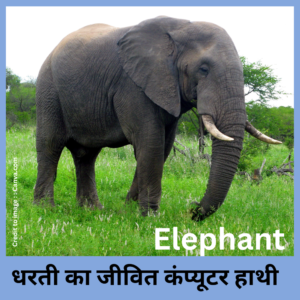The Caracal, also known as the African Caracal, is a graceful, medium-built wild cat known for its agility and striking appearance. Found across regions of Africa, the Middle East, Central Asia, and select areas of India. With its striking tufted ears and powerful agility, the caracal stands out among African wildlife. This article explores the unique characteristics, behavior, habitat, diet, threats, and conservation status of this elusive feline. Through factual insights and human-centered storytelling, we aim to create awareness and appreciation for this underrepresented predator of the wild. This article is based on Caracal and African Caracal: Mysterious Wild Cats of Africa and Their Secret Survival Strategies.
Introduction: Meet the Caracal and African Caracal

The Caracal (Caracal caracal), commonly called the African Caracal, is a solitary and elusive wild cat recognized for its sharp hunting skills and distinctive long ears adorned with black tufts. Despite its resemblance to the lynx, the caracal is a unique species in its own right and thrives in various terrains—from dry savannas and deserts to forests and rocky hills.
Though relatively unknown compared to lions and leopards, the caracal plays a crucial role in maintaining ecosystem balance by controlling rodent and bird populations.
1. Physical Appearance and Identification : Caracal and African Caracal
Distinct Features of the Caracal and African Caracal
Reddish-gold coat, short and smooth
Long legs and a muscular build
Striking black tufts (up to 5 cm) on the ears
Light-colored underparts accented by white streaks surrounding the eyes.
These features help in both camouflage and communication with other caracals in the wild.
2. Habitat and Geographic Distribution of Caracal and African Caracal

Where Does the African Caracal Live?
Originating from sub-Saharan Africa—with strong populations in South Africa, Namibia, Ethiopia, and Kenya—the caracal also inhabits parts of the Middle East, including Israel and Iran.
Extends into Central Asia and parts of Western India
The is remarkably adaptable, thriving in arid deserts, open bushlands, grassy savannas, and even environments shaped by human activity.
3. Behavior and Hunting Skills of Caracal and African Caracal :
Solitary but Strategic
Caracals are nocturnal and solitary hunters. They rely heavily on stealth and speed to ambush prey. Their diet includes:
Small mammals (rodents, hares)
Birds (including birds in flight)
Reptiles and insects when larger prey is scarce
The African Caracal is known for its incredible leaping ability—capable of jumping over 3 meters vertically to snatch birds mid-air.
4. Reproduction and Lifespan of Caracal and African Caracal
Breeding Season: Year-round, with peak in warmer months
Gestation Period: 68–81 days
Litter Size: 1–4 kittens
Life Span : In the wild, caracals can live up to 12 years, with an even longer lifespan observed in captivity.
Mothers raise their young in dens hidden among rocks or thick vegetation.
5. Threats to the Survival of Caracal and African Caracal
Despite being listed as Least Concern by the IUCN, the caracal faces multiple challenges:
Habitat loss due to agriculture and development
Human-wildlife conflict, especially with livestock farmers
In certain areas, caracals fall victim to illegal hunting and trapping, often wrongly accused of attacking poultry or livestock and subsequently targeted as nuisance animals.
6. Conservation Efforts and Future Outlook : Caracal and African Caracal
Conservationists are working to protect caracal habitats through:
Protected areas and wildlife reserves
Community-based conservation programs
Education on coexisting with predators
Raising awareness about the ecological importance of African Caracals is vital for their long-term survival.
Summary
The Caracal and African Caracal are fascinating, misunderstood wild cats that deserve more attention in the global conservation narrative. Agile, intelligent, and resilient, these cats symbolize the balance and beauty of African wilderness. Their future depends on responsible human actions, habitat protection, and environmental education.
FAQs:
Q.1. How does a caracal differ from an African caracal?
Ans. There is no difference—“African Caracal” is simply a regional reference to the same species, commonly found in Africa.
Q.2. Is it possible to keep a caracal as a pet?
Ans. While some try to domesticate caracals, they are wild animals with complex needs and should not be kept as pets.
Q.3. What do caracals eat in the wild?
Ans. Caracals are carnivores that prey on rodents, birds, hares, and small antelopes, using stealth and agility.
Q.4. Are caracals endangered?
Ans. No, they are listed as Least Concern by the IUCN, but face regional threats due to human activities.
Q.5. Why do caracals have ear tufts?
Ans. The exact reason isn’t clear, but ear tufts may aid in communication, camouflage, or hearing enhancement.
References
- International Union for Conservation of Nature (IUCN) – Caracal caracal Species Assessment
- African Wildlife Foundation – Caracal Facts & Information
- National Geographic – Caracal: The Mysterious Cat of the Desert
- Wildlife Conservation Society – Small Wild Cats of Africa
PRAKRITI DARSHAN-NATURE AND ENVIRONMENT MAGAZINE
Prakriti Darshan is a leading Hindi-language magazine and digital platform dedicated to raising public awareness on vital issues related to nature, biodiversity, climate change, sustainable development, and environmental conservation. This magazine represents a unique blend of science, society, and sensitivity—offering a common platform for researchers, students, NGOs, policymakers, nature lovers, and conscious citizens alike.
With thought-provoking articles, inspiring stories, environmental research, impactful projects, and policy perspectives, Prakriti Darshan is a transformative journey toward a greener and more sustainable future.
Let us come together to protect and preserve our planet for generations to come. 🌿🌍
Join us in our mission to protect and celebrate the planet. 🌏💚
Click for more information
- Visit www.prakritidarshan.com for Free Magazine ,Free membership benefits ,offered price magazine @ Rs.1 or Rs.11 only and more ……
- 🎗️Sponsor Prakriti Darshan Magazine – Support our environment mission.
- 📚 Explore the Environment Magazine – Read our latest and past issues.
- ✍️ Read Editor’s Article or Blog – Insightful thoughts from our editorial desk.
- 🌱 Join Membership – Be part of India’s leading green community.
- 🤝 Become an NGO Impact Story Partner – Share your grassroots impact nationwide.
- 🏢 Become a Company Partner – Showcase your CSR, ESG, or sustainability work.
- 👤 Become an Individual Partner – Volunteer, write, and raise your green voice.
- 📢 Advertise with Us – Reach eco-conscious readers across India.
- Eco Trails Newsletter
- Donate for “Hari Ho Vashundhara & Har school Hariyali “ Plantation campaign Associated Partner NGO :GDSS NGO www.gdssngo.org
BALA DATT SHARMA,
MANAGING EDITOR ,
PRAKRITI DARSHAN-NATURE AND ENVIRONMENT MAGAZINE
- Yamuna River- Lifeline of North India :A Scientific, Agricultural, and Environmental Perspective - July 14, 2025
- Jurassic World Rebirth Breaks Box Office Records : Global Box Office Revenue $1.5 Billion (And rising) Globally with a Roaring Environmental Message - July 14, 2025
- African Elephant: Facts, Types, Scientific Data, and Why Their Survival Matters for Our Planet - July 13, 2025





